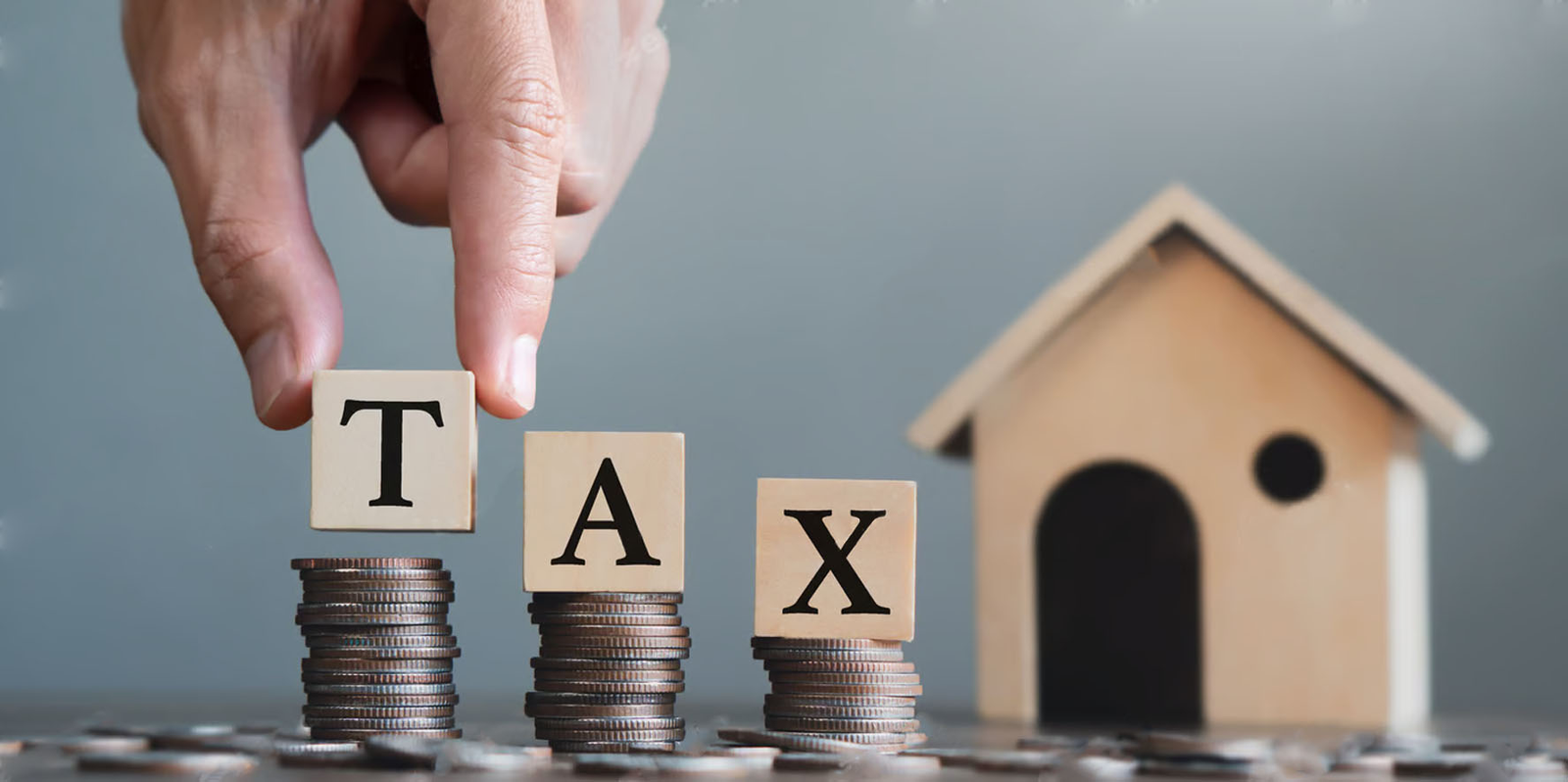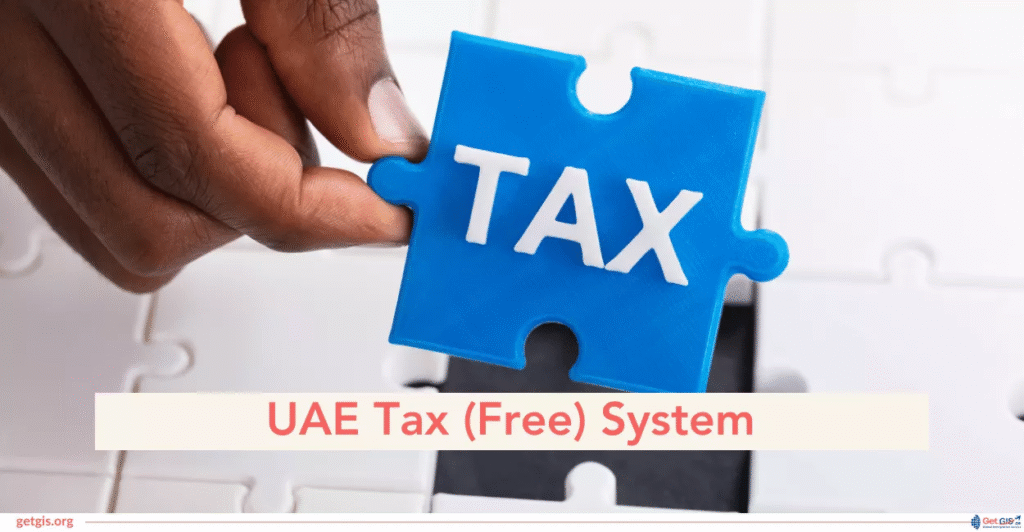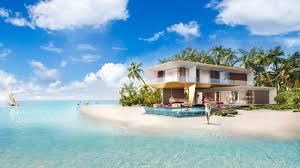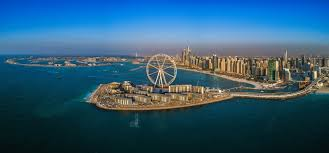Now Reading: Top Tax-Saving Opportunities in Dubai’s Upcoming Island Projects
-
01
Top Tax-Saving Opportunities in Dubai’s Upcoming Island Projects
Top Tax-Saving Opportunities in Dubai’s Upcoming Island Projects

Table of Contents
Picture yourself relaxing in a stunning villa on Dubai Islands, the Arabian Gulf sparkling just beyond your private terrace, knowing your investment is growing in a market where taxes barely touch your returns. In 2025, Dubai’s upcoming island projects Palm Jumeirah, Palm Jebel Ali, and the expansive 17-square-kilometer Dubai Islands are redefining wealth-building with unmatched tax-saving opportunities.
With 100% freehold ownership, a dirham pegged to the U.S. dollar for stability, and residential purchases free of 5% VAT, these islands attract 58% of buyers from countries like the UK, India, and Russia, driving 94,000 property transactions in the first half of 2025. Offering 4-6% rental yields and 8-12% price appreciation, they surpass London (2-4%) or New York (3-4%).
Properties over $545,000 qualify for a 10-year Golden Visa, while smaller units offer 2-year residency perks. With no personal income tax, capital gains tax, or annual property taxes for individuals, and strategic ways to minimize corporate taxes, this guide explores tax-saving opportunities in projects like Palm Jumeirah Ocean Villas, Palm Jebel Ali Coastal Villas, Dubai Islands Horizon Villas, Azura Residences, and Cotier House, helping you maximize your investment.
Why Dubai’s Island Projects Shine for Tax Savings
Dubai’s island projects, accessible 15-30 minutes from Dubai International Airport via Sheikh Zayed Road or water taxi, offer 50 kilometers of coastline, lush parks, and 80 resorts for 30,000 residents. With 2-3% vacancy rates versus 7-10% globally, demand is fueled by 25 million tourists and a 5% population surge. Individual investors keep 100% of rental income ($48,000-$240,000 annually on a $1.2 million-$4 million property), versus $26,400-$144,000 elsewhere after taxes.
Zero capital gains tax saves $60,000-$280,000 on a $300,000-$1 million profit, and no annual property taxes save $12,000-$80,000 yearly, unlike New York (1-2%) or London (council tax up to 2%). Residential purchases dodge 5% VAT ($60,000-$200,000), and individuals avoid the 9% corporate tax. Free zone companies save $1,000-$30,000 annually, and small business relief waives corporate tax for revenues under $816,000 until December 31, 2026. These tax benefits make island projects a global standout.
The tax-saving potential feels like a financial embrace for investors.
Zero Capital Gains Tax: Keep Your Profits
Dubai’s zero capital gains tax, unchanged in 2025, is a game-changer. Selling a $4 million Palm Jumeirah villa for $5 million after 25% appreciation yields a $1 million tax-free profit, saving $200,000-$280,000 compared to London (20-28%) or New York (20-37%). A $1.2 million Azura Residences apartment sold for $1.5 million yields a $300,000 tax-free gain, saving $60,000-$84,000. With 8-12% price growth and 2-3% vacancy rates, these tax-free profits drive demand, making island projects a top choice for wealth-building.
Keeping every dirham feels like a victory for your wallet.
No Personal Income Tax: Rental Income Stays Yours
Investors leasing island properties pay no personal income tax, unlike the U.S. (up to 37%) or UK (up to 45%). A $4 million villa yielding $160,000-$240,000 annually keeps every dirham, versus $88,000-$144,000 elsewhere, saving $72,000-$96,000. A $1.2 million apartment yielding $48,000-$72,000 saves $21,600-$28,800. Long-term leases require Ejari registration ($54-$136 annually), while short-term rentals, boosted by 25 million tourists, need DTCM registration ($408-$816). Short-term rentals boost yields by 10-20%, adding $4,800-$48,000 annually. This tax-free income makes island projects a lucrative haven.
Tax-free rentals feel like a monthly gift to your financial future.
No Annual Property Taxes: Slash Ownership Costs
Unlike global markets where annual property taxes cost $12,000-$80,000 on a $1.2 million-$4 million property, Dubai imposes none, freeing up funds for reinvestment. Maintenance fees ($5,000-$25,000) and a 5% municipality fee on rentals ($2,400-$12,000) are the main ongoing costs, far lower than New York’s 1-2% or London’s council tax. This absence of property taxes enhances affordability, driving 58% of buyers to island projects where low vacancy rates amplify value.
No property taxes feel like a weight lifted from your investment.
VAT Exemption: Save Big on Purchases
Residential purchases are VAT-exempt, saving $60,000-$200,000 on a $1.2 million-$4 million property, unlike commercial properties or the UK’s stamp duty (up to 12%). Off-plan purchases may incur 5% VAT on developer fees ($20,000-$80,000), recoverable via Federal Tax Authority (FTA) registration ($500-$1,000).
Short-term rental operators must register for VAT if revenue exceeds $102,041, charging 5% but claiming credits on expenses like DTCM fees ($408-$816). A $4 million villa yielding $160,000-$240,000 incurs $8,000-$12,000 in VAT but allows $2,000-$5,000 in credits. Non-compliance risks fines up to $13,612, so diligent records are key.
The VAT exemption feels like a warm welcome to buyers.
New Tax Rule 1: Domestic Minimum Top-up Tax (DMTT)
Effective January 1, 2025, the DMTT imposes a 15% tax on multinational enterprises (MNEs) with global revenues over €750 million ($793 million). This impacts corporate investors managing large portfolios, not individuals. A company leasing 10 properties with $1 million in income faces a 15% tax ($150,000), reducing net income to $850,000.
Individual investors and smaller entities with revenues below $816,000 are unaffected, and Qualified Free Zone Person (QFZP) status in areas like Dubai Multi Commodities Centre (DMCC) avoids DMTT, saving $12,240-$61,200 on $122,400-$612,000 in income. QFZP setup costs $2,000-$5,000, with annual fees of $1,000-$3,000. This rule keeps island projects attractive for most buyers.
The DMTT feels like a corporate tweak, sparing individual wealth.
New Tax Rule 2: Qualifying Investment Fund (QIF) Updates
Cabinet Decision No. 34 of 2025, effective Q2 2025, refines QIF and Real Estate Investment Trust (REIT) rules. QIFs remain exempt from corporate tax if real estate income is below 10% of total income and ownership is diversified. If a QIF earns $1 million, with $200,000 from real estate, 80% ($160,000) faces 9% tax ($14,400). Restructuring costs $1,500-$4,000. Individual investors avoid these rules, enjoying tax-free gains, while corporate investors must ensure compliance to minimize taxes.
QIF updates feel like a smart challenge for corporate portfolios.
Palm Jumeirah Ocean Villas: Tax-Free Luxury

Palm Jumeirah Ocean Villas by Nakheel, set for completion in Q2 2025, offer 4-6 bedroom villas ($3 million-$6 million) with 4-6% rental yields and 8-12% price growth. These 4,000-6,000 square foot homes feature private beaches. A $4 million villa yields $160,000-$240,000 tax-free, saving $72,000-$96,000 versus $88,000-$144,000 elsewhere. Selling for $5 million yields a $1 million tax-free profit, saving $200,000-$280,000.
No property taxes save $40,000-$80,000 yearly, and VAT exemption saves $200,000. Initial costs include a 4% DLD fee ($120,000-$240,000), 2% broker fee ($60,000-$120,000), and a 20/50/30 payment plan. Maintenance fees are $15,000-$25,000, with a 5% municipality fee ($8,000-$12,000). QFZP saves $40,800-$61,200 for corporates. U.S. investors deduct depreciation ($72,727-$109,091), saving up to $36,364. Golden Visa eligibility applies.
The beachfront elegance feels like a tax-free paradise.
Palm Jebel Ali Coastal Villas: Emerging Tax-Smart Gem
Palm Jebel Ali Coastal Villas by Nakheel, set for completion in Q3 2025, offer 4-6 bedroom villas ($2.72 million-$5.44 million) with 4-6% rental yields and 8-12% price growth. These 3,500-5,500 square foot villas boast eco-friendly designs. A $3 million villa yields $120,000-$180,000 tax-free, saving $54,000-$72,000. Selling for $3.75 million yields a $750,000 tax-free profit, saving $150,000-$210,000. No property taxes save $30,000-$60,000 yearly, and VAT exemption saves $150,000. Initial costs include a 4% DLD fee ($108,900-$217,800), 2% broker fee ($54,450-$108,900), and a 50/50 payment plan. Maintenance fees are $12,000-$20,000, with a 5% municipality fee ($6,000-$9,000). QFZP saves $30,600-$45,900. U.S. investors deduct depreciation ($54,545-$98,182), saving up to $34,091. Golden Visa eligibility applies.
The coastal charm feels like a vibrant tax-free retreat.
Dubai Islands Horizon Villas: Modern Tax-Free Haven
Dubai Islands Horizon Villas by a leading developer, set for completion in Q2 2026, offer 4-6 bedroom villas ($2.72 million-$5.44 million) with 4-6% rental yields and 8-12% price growth. These 4,000-6,000 square foot villas feature sustainable designs. A $3 million villa yields $120,000-$180,000 tax-free, saving $54,000-$72,000. Selling for $3.75 million yields a $750,000 tax-free profit, saving $150,000-$210,000. No property taxes save $30,000-$60,000 yearly, and VAT exemption saves $150,000. Initial costs include a 4% DLD fee ($108,900-$217,800), 2% broker fee ($54,450-$108,900), and a 20/50/30 payment plan. Maintenance fees are $12,000-$20,000, with a 5% municipality fee ($6,000-$9,000). QFZP saves $30,600-$45,900. U.S. investors deduct depreciation, saving up to $34,091. Golden Visa eligibility applies.
The waterfront serenity feels like a modern tax-free oasis.
Azura Residences: Urban Tax-Smart Choice
Azura Residences by Invest Group Overseas, set for completion in Q2 2026, offer 1-4 bedroom apartments ($680,625-$2 million) with 4-6% rental yields and 8-12% price growth. These 1,000-2,500 square foot units feature sea views. A $2 million apartment yields $80,000-$120,000 tax-free, saving $36,000-$48,000. Selling for $2.5 million yields a $500,000 tax-free profit, saving $100,000-$140,000. No property taxes save $20,000-$40,000 yearly, and VAT exemption saves $100,000. Initial costs include a 4% DLD fee ($27,225-$80,000), 2% broker fee ($13,613-$40,000), and a 60/40 payment plan. Maintenance fees are $6,000-$12,000, with a 5% municipality fee ($4,000-$6,000). QFZP saves $20,400-$30,600. Golden Visa eligibility applies.
The urban waterfront feels like a sleek tax-free haven.
Cotier House: Serene Tax-Free Retreat
Cotier House by Imtiaz Developments, set for handover in Q1 2027, offers 1-3 bedroom apartments and townhouses ($653,250-$1.2 million) with 4-6% rental yields and 8-12% price growth. These 900-2,200 square foot units offer sea views. A $1.2 million apartment yields $48,000-$72,000 tax-free, saving $21,600-$28,800. Selling for $1.5 million yields a $300,000 tax-free profit, saving $60,000-$84,000. No property taxes save $12,000-$24,000 yearly, and VAT exemption saves $60,000. Initial costs include a 4% DLD fee ($26,130-$48,000), 2% broker fee ($13,065-$24,000), and a 60/40 payment plan. Maintenance fees are $6,000-$12,000, with a 5% municipality fee ($2,400-$3,600). QFZP saves $12,240-$18,360. Golden Visa eligibility applies.
The serene sea views feel like a tranquil tax-free gem.
Strategies to Maximize Tax Savings
For individuals: First, hold properties personally to avoid corporate taxes. Second, recover 5% VAT on off-plan purchases via FTA registration. Third, use double taxation treaties with 130+ countries to avoid foreign taxes. Fourth, U.S. investors deduct depreciation ($21,818-$109,091) and management fees ($2,400-$14,545), saving up to $36,364. For corporates: First, obtain QFZP status to avoid 9% tax and DMTT. Second, keep QIF income below 10%. Third, leverage small business relief until 2026. Hire a property manager ($5,000-$25,000 annually) and tax professionals to avoid fines up to $136,125.
These strategies feel like a clear path to tax-smart wealth.
Costs of Ownership
Buying a $3 million property incurs a 4% DLD fee ($120,000), 2% broker fee ($60,000), and a 10% deposit ($300,000). Flexible payment plans spread costs. Annual maintenance fees are $12,000-$25,000, with a 5% municipality fee ($6,000-$12,000). Off-plan purchases may incur 5% VAT ($20,000-$80,000), recoverable via FTA registration. Gift transfers reduce DLD fees to 0.125% ($3,750), saving $116,250.
The costs feel like a small step toward tax-free riches.
Navigating Risks in 2025
A projected oversupply of 41,000 units may slow price growth. Mitigate by choosing trusted developers like Nakheel or Imtiaz, verifying escrow compliance under the 2025 Oqood system, and targeting low-vacancy projects (2-3%). Ensure QFZP and VAT compliance to avoid fines. Short-term rentals boost yields, while long-term leases ensure stability. Proximity to key hubs drives value.
Why Dubai’s Island Projects Lead
Palm Jumeirah Ocean Villas, Palm Jebel Ali Coastal Villas, Dubai Islands Horizon Villas, Azura Residences, and Cotier House offer no personal income tax, capital gains tax, or property taxes, saving $12,000-$280,000 annually. With 4-6% yields, 8-12% price growth, and Golden Visa perks, these 2025 projects make Dubai’s islands a vibrant, tax-smart haven for investors seeking luxury and profitability.
read more: Why Dubai’s Island Villas Are Leading Global Tax-Free Investments






















